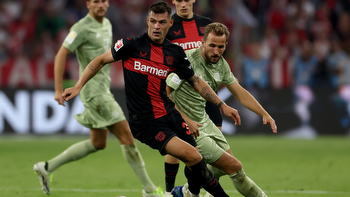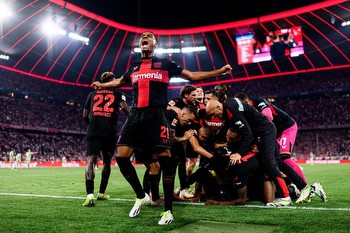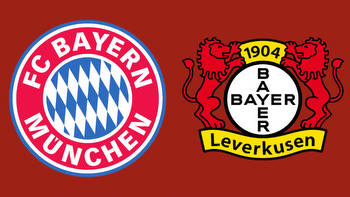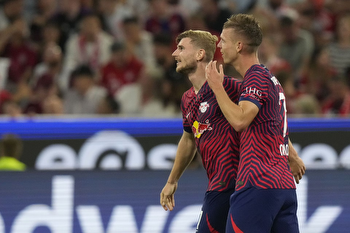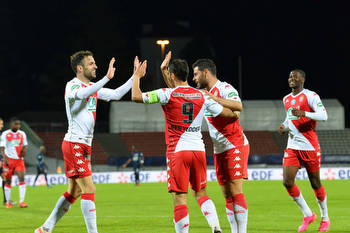BFW Opinion: Did Bayern Munich’s Thomas Tuchel get “out-Tucheled”?

Bayern Munich’s loss to Bayer Leverkusen created a seismic shift in the race to this year’s Bundesliga title.
Leverkusen’s odds of winning the league jumped over 20% to 66.3% on the basis of that outcome according to Opta. That is a huge shift based on one game, even if it was a six point game. So, we know what happened in Leverkusen’s house, now we will endeavour to discern what were the reasons for that result.
Big Game Philosophy - the game planning dilemma
Every Bundesliga follower has had this game marked at a key match for weeks, if not months. How an organization, and a coach prepare for a game like this is very different than how they prepare for most matches. So, long before the players’s emotions and drive to win “a big one” come into play, game planning sets the tone.
The most significant difference in match preparation for a game like this one, is the intensity and level of detail and depth of analysis that takes place before the kick off. Bayern (and Leverkusen) have had analysts working up the opponent’s formation, tendencies and personnel, and then charting it, summarizing it and most importantly doing “self scouting” and comparing the book (literally) that is developed on the opponent to the book they build on their own side. Then the coaches, analysts and scouts develop the match plan to (hopefully) beat the opponent they now have studied in the most intimate detail. Too much is at stake to approach the match any other way.
The big question then becomes, what do you do with all that information? Do you adapt your team’s approach to better attack their opponent’s weaknesses or do you adapt your team’s approach to focus on your team’s strengths and not be concerned about your opponent’s weaknesses, or some compromise of the two approaches?
These decisions all have to be taken in the context of knowing that that other coach and his staff are doing exactly the same thing as you are. Scouting you intensely, and self-scouting hard as well. If you and your team can identify various tendencies, strengths and weaknesses, you know your opponent will be doing the same thing as well, and trying to make changes that will help them as well.
If you think about it too much it leads quickly to an infinite chain of second-guessing and trying to anticipate what your opponent will do, knowing that he is trying to anticipate what you will do.
So, for big game coaching, in many sports (the Super Bowl is perhaps the most over game-planned game in sport every year), three basic philosophies have developed on how to prepare. They all have their own pros and cons. We’ll try to explain them here using some well known cliches for short-hand.
The first approach is “Dance with the one who brung ya.” Which means that you change almost nothing about how you play for the big match. The logic is that if it was good enough to get you to the important game, it should be good enough to win the important game. It is an echo of the coaching philosophy of “if it works do it until they force you to stop doing it.” The advantages are that the system is well known to your players, and allows them to focus on executing rather than new approaches to a game. The other advantage is that you know it works most of the time, so it is a low risk approach.
The big disadvantage is that it is predictable, and based on good scouting your opponent will know your system almost as well as you do. Many high level coaches eschew this approach as they don’t want to be predictable, often for fear that their opponent’s adjustments will take advantage of their well worn tendencies. Tactical thinkers in many fields know just how badly the “Soviet” approach of “If the plan isn’t working just apply the plan harder” works out.
The second approach is to make tweaks and adjustments. At this level you try to find just the right balance. Enough to change to emphasize your opponent’s weakness and your strengths, to allow for some limited level of surprise, without forcing your players to learn or change too much from their normal patterns. Done right, this approach can be very successful, and these kind of changes can even be implemented during the match, often at half time.
The third approach is to make significant changes to your tactics and/or personnel and then virtually premier them during the “big game.” The advantage here is, hopefully, surprise. Your opponent has scouted the you-know-what out of you and is prepared for a certain approach, and when you unleash the novel approach you catch them off-guard and gain significant advantage until they can adjust, if they can adjust. The risk is that your players don’t adapt well enough and can’t execute the novel strategy at a high enough level with the amount of practise they have.
The strange thing about the recent Bayern Munich - Leverkusen match is that both coaches opted for the third, boldest approach, of big changes for a big game.
Formational Choices
Bayern left behind their normal 4-2-3-1 for a rarely seen 3-4-2-1 formation for this match. And surprise was not the only reason for doing so.
The way Thomas Tuchel set up his (effectively) five-man back line was to counter the two wing-backs (Jeremie Frimpong and Álex Grimaldo) who are such a key part of Leverkusen’s offense this year. With three centre-backs and two wing-backs with some speed and endurance, this formation should offer the chance to both pin back Frimpong and Grimaldo, as well has have enough bodies to defend them effectively.
Thomas Müller inferred that the plan was to “mirror” Leverkusen’s style only to do it with more intensity by defending, as Tuchel commented, farther up the field. Considering the large number of takeaways Bayern produced in Leverkusen’s end, it appears the defending up the field approach was executed relatively well by Bayern’s players.
This formational choice should have pleased those who don’t like the “U” shaped offense, as Bayern’s three true attackers played more to the middle, rather than developing so much from the wings. However, there is a downside to that.
Leverkusen also radically changed their style of play as well. While some sites list their formation as 3-4-3, it effectively was functioning as a 4-2-3-1 with Josip Stanišić playing far more defensively and conservatively than a wing-back normally would.
Leverkusen’s midfielder Robert Andrich made comments about both teams changing their formation so significantly in this key game after the match: “We were a little surprised by their formation. We thought up something atypical beforehand so that Bayern would be surprised. He thought up the idea on Thursday and we practiced in on Friday. Huge compliments to the team that we were able to adapt so quickly.”
Lineup Choices
Both coaches made some lineup decisions that seemed unusual at the time as well. Tuchel left Müller on the bench, and started Sacha Boey at left wing-back. Joshua Kimmich started the game on the bench in favour of Aleksandar Pavlović.
We learned later, not surprisingly, that Tuchel felt he needed Boey’s speed to counter the fast and explosive Frimpong. This is presumably because he did not think Raphaël Guerreiro had the speed to handle the task.
Tuchel has not clearly discussed his decision to start Kimmich on the bench, but it is possible that the lingering impact of his injury was a factor.
Alonso also made some very unusual changes in his line-up. Frimpong was left on the bench in favour of the more defensive Stanišić, who earlier this year was publically grumbling about his lack of playing time. Two other starters for Leverkusen were also surprising choices. Amine Adli and Nathan Tella got starts (with veteran Jonas Hoffman left on the bench despite having a great season). For Adli it was his first start in seven games and for Tella it was only his third start of the season.
Why was Hoffman left on the bench for this key match? Apparently Alonso wanted more speed and energy over the veteran’s well developed skills.
Why didn’t it work for Bayern?
The first problem was that Tuchel had set up his squad to nullify Frimpong and Grimaldo’s speed and deep wing play, and when the players stepped on the field, Frimpong wasn’t there. Boey got outfoxed by a much more conservative Stanišić who took advantage of the new man’s loss of focus to bury a clear opportunity. It’s a fair question to ask if a more seasoned Guerreiro would have made that same error.
Tuchel’s game plan with this formation was not to sit back and defend waiting for counters, but to defend high up the field, play a positive game, and “make the match.” In some ways that plan succeeded. Bayern created a large number of turnovers in Leverkusen’s half, dominated possession overall, and spent a great deal more time in Leverkusen’s half then they did in ours. Bayern did, effectively, make the game.
The big issue (aside from some pretty simple defensive errors), was that the 3-4-2-1 was trying to put the attack through the middle of the pitch, which created too much congestion and allowed Leverkusen’s very disciplined defense, to put a lot of bodies close to Leroy Sané, Jamal Musiala, and Harry Kane without having to spread their line wide leaving gaps. They were simply not concerned with Boey or Noussair Mazraoui, and were able to smother the middle of the defensive sector.
Leverkusen, used disciplined defending, relying on counters to launch attacks, in the face of a more open and assertive Bayern team. They defended extremely well and stifled Bayern’s more centrally focussed attack.
That is not to ignore a number of problems with individual Bayern players who made mistakes they really should not have made (leading to Müller’s ire and Kimmich’s defense of the coach and the system), but here we are just looking at game planning, systemic and personnel issues.
Strangely, in this match Tuchel tried to play Leverkusen’s style, while Alonso had Leverkusen play in a manner very akin to “Tuchel-ball” and the result strongly favoured Leverkusen.
What it means going forward
So Tuchel tried to change at least two features of his team going into this game, the formation, and taking a more offensive philosophy. Neither of them led to a good result for the team. Alonso took a much more conservative approach, and played a match far closer to Tuchel’s normal style than his own. It produced a resounding victory for him.
Having made some changes and tried to play positive or “beautiful” football and gotten his fingers burned, it seems unlikely that Tuchel will engage in much experimenting for the remainder of the season. We can expect Tuchel to revert back to his more defensive style for the home stretch rather than venturing out into new territory like he did against Leverkusen.
Looking for a more in-depth review of the game, or do you just want to wallow in our misery? Then check out our postgame podcast! Chuck and INNN talk about Tuchel’s shortcomings and why Bayern Munich were outclassed by Bayer Leverkusen. Listen to it below or on Spotify.
As always, we appreciate all the support!













